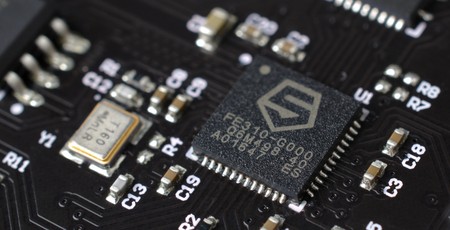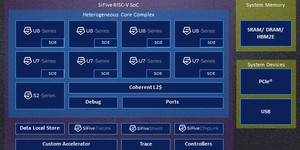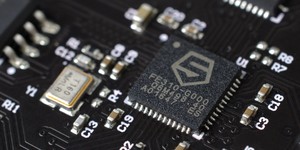
Naveed Sherwani, chief executive officer of fabless semi company SiFive, has claimed that there'll be smartphones and servers on the market powered by the RISC-V instruction set architecture (ISA) within the next five years.
One of a number of entries in the free and open source silicon (FOSSi) movement, the open RISC-V ISA has been making serious headway in moving off the drawing board and into actual shipping products: Western Digital ships RISC-V-based cores in its storage processing products, it can be found in solid-state storage controllers, many-core accelerators for artificial intelligence work, Synaptics human-interface devices, and while Nvidia has been using it for logic chips in the past the company has recently telegraphed a deeper interest in the technology. Designed to scale from ultra-low-power implementations for embedded designs all the way up to exascale supercomputers, RISC-V has industry incumbents worried: RISC-V pioneer SiFive has enjoyed investment from Intel in a keep-your-enemies-closer move while Cambridge-based Arm, having failed to scare potential users away from the ISA, released its own free-as-in-beer cores to compensate.
At the moment, though, while RISC-V chips may lurk in SSDs, trackpads, and smartwatches, getting a non-embedded RISC-V device isn't straightforward. SiFive is at the forefront, here: The company released a 1.5GHz development board capable of booting mainstream Linux back in February 2018, following on from its HiFive1 Arduino-like embedded development board. Now, SiFive chief executive Naveed Sherwani has made a bold prediction: Off-the-shelf RISC-V servers and smartphones to appear within the next five years.
Previously, Sherwani had predicted that RISC-V-based smartphones would arrive within the next five years and servers would follow in around 10. This prediction has now been revised, according to an interview with Data Center Knowledge, pulling servers down to the same five-year time frame owing to the rate of adoption and interest from the industry - in particular Qualcomm, which has dabbled with Arm-based server chips in the past and recently invested in SiFive through its Qualcomm Ventures arm.
Specifically, Sherwani claims that RISC-V 'cellphones and laptops are two years, and servers are five years away - that is how much it has changed in the last year [since the previous prediction].' The pull-in of the smartphone target follows the US placing a trade embargo on Chinese telecoms giant Huawei banning it from using any technology from US companies; while the embargo would also prevent it from using parts from SiFive, it would be free to produce its own RISC-V designs through its HiSilicon fabless semiconductor subsidiary.
The launch of a novel instruction set architecture into an established market isn't altogether straightforward, however. Intel's delayed entry into the smartphone and tablet market proved an abject failure when popular Android software written with the Arm architecture in mind failed to work correctly on the company's x86-based Atom processors; numerous attempts to bring Arm into the data centre, by contrast, have also fallen by the wayside - including one effort by AMD. Where RISC-V has an edge, however, is in its open nature: Anyone is free to see, implement, and even sell designs based on the RISC-V ISA, and some implementations are also provided under permissive licences for immediate re-use with no royalties or license fees; this stands in stark contrast to both x86 and Arm, which are jealously-guarded proprietary ISAs.

MSI MPG Velox 100R Chassis Review
October 14 2021 | 15:04








Want to comment? Please log in.